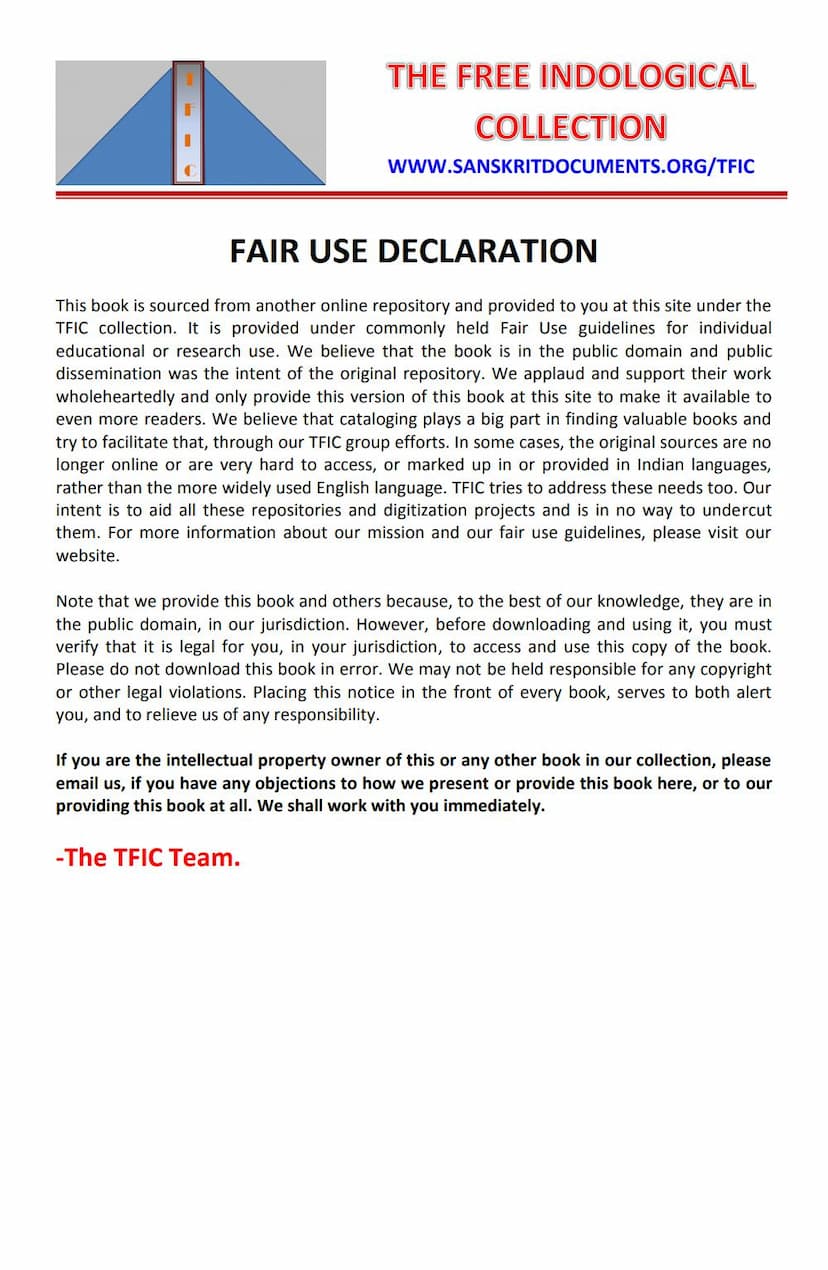Higher Education And Research In Prakrits And Jainology
Added to library: September 1, 2025

Summary
This document, "Higher Education and Research in Prakrits & Jainology in the Universities of India" by Dr. Gokul Chandra Jain, published in 1983, is a comprehensive overview of the state of Prakrit and Jainological studies in Indian universities and research institutions. It highlights the historical development, current status, and future prospects of these fields.
Here's a summary of its key points:
1. Historical Context and Revival:
- The study of Prakrits and Jainology gained traction in the last two centuries, largely due to the efforts of both Western and Eastern scholars.
- Early Western scholars like Lieut. Wilfred, Col. Colin Mackenzie, Dr. Buchanan Hamilton, and H. T. Colebrooke were instrumental in bringing Jainism and its literature to the attention of the West.
- Numerous scholars, including Albrecht Weber, Leumann, Pischel, Jacobi, and Buhler, made significant contributions.
- In India, research initially flourished within Departments of Indology or Classical Languages, which included Sanskrit, Pali, and Prakrit. The study of Apabhramsa was also integrated, especially due to its importance for understanding modern Indo-Aryan languages.
- However, there was a decline in the study of classical languages, impacting Pali and Prakrit studies.
- In recent times, there's a renewed interest in Prakrits and Jainology, partly because they offer fertile ground for doctoral dissertations.
2. Survey of Jainological Studies and Bibliographies:
- The document mentions early bibliographical works like A. Guerinot's "Essai De Bibliography Jaina" (1906) and C. L. Jain's "Jaina Bibliography" (1945).
- H. D. Velankar's "Jinaratna-koś" (1944) is highlighted as being of immense importance for cataloging Jainological manuscripts.
- The author notes his own involvement in conducting surveys of Prakrit and Jainological studies and publications, with several reports published between 1959 and 1981.
- The need for a classified bibliography of doctoral dissertations in Jain and Buddhist Studies is emphasized.
3. Developments and Key Areas:
- Interdisciplinary Scope: Prakrits and Jainology are recognized as having vast scope for interdisciplinary studies within Humanities and Social Sciences, and even in natural and life sciences (Physics, Mathematics, Astronomy, Astrology).
- Role of Seminars and Conferences: Seminars, conferences, and summer schools have been crucial in highlighting the importance of these studies. The establishment of a separate section for "Prakrit and Jainism" in the All-India Oriental Conference is a significant development.
- Endowment Chairs and University Departments: Several universities have instituted endowment chairs and departments for Jainological studies, including Mysore, Poona, Udaipur, Rajasthan, Punjabi, and Karnatak Universities.
- University Departments: Traditional departments of classical languages (often Sanskrit departments) continue to be centers for Prakrit and Jainological studies. Notable examples include Delhi University, Banaras Hindu University, and Allahabad University.
- Research Institutes: Several research institutes are dedicated to Prakrit, Jainology, and Ahimsa, such as the Research Institute of Prakrit, Jainology and Ahimsā (Vaishali), P. V. Research Institute (Varanasi), and L. D. Institute of Indology (Ahmedabad).
- Major Research Projects: Key recommended research projects include manuscript surveys and cataloging, historical and descriptive grammars of Prakrit dialects, comprehensive histories of Prakrit and Jainological literature, a Middle Indo-Aryan Dictionary, and an encyclopedia of Prakrits and Jainology.
4. Observations on Research Trends:
- Volume of Research: Over the past five decades, more than five hundred doctoral dissertations have been approved in Jainology and Prakrits, with hundreds of scholars currently registered.
- Quality vs. Quantity: While there's an increasing quantity of research, there's a perceived gradual fall in quality, possibly due to the rush for degrees.
- Lack of Coordination: A significant issue is the lack of coordination, leading to parallel research on the same subjects, indicating a lack of awareness of existing work.
- Areas of Research: Research covers a wide range, including language (classical and regional), literature (Agama, Purānas, grammar, poetics), linguistics, philosophy, history, art, culture, sociology, and even mathematics and astronomy.
- Challenges: Lack of proper facilities, insufficient traditional background, and haste contribute to the decline in research standards.
- UGC Role: The University Grants Commission (UGC) is urged to provide guidelines and incentives, and to establish full-fledged departments for these studies, as no such dedicated department with adequate staff and facilities has been created by the Commission.
5. Recommendations:
- Structured Higher Education: Courses at postgraduate and undergraduate levels need careful planning to foster specialized study and interdisciplinary approaches.
- Prioritize New Research: Doctoral dissertations should focus on new subjects rather than repeating past work.
- Critical Editions: Top priority should be given to preparing critical editions of ancient texts, emphasizing genuine critical evaluation.
- Specific Research Topics: Dissertation topics should be specific and well-defined, with a clear need for more detailed lists of research priorities.
- Promoting Studies: Establishing full-fledged departments and centers of advanced study, strengthening existing departments, providing scholarships and fellowships, and regularly organizing seminars and workshops are recommended.
- Addressing Undesirable Developments: The practice of teaching Prakrit portions of classical dramas and works on poetics through Sanskrit translations (Chāyā) is criticized for diluting the understanding and appreciation of these languages and their cultural heritage.
6. Appendices:
- The document includes extensive lists of doctoral dissertations completed and in progress across various universities in India, as well as a section on Jainological researches conducted abroad. These lists provide a detailed picture of the research landscape in the early 1980s.
In essence, the book is a scholarly assessment of the academic landscape of Prakrit and Jainological studies in India, advocating for their increased recognition, better organization, and more coordinated research efforts to preserve and advance this crucial aspect of Indian cultural heritage.